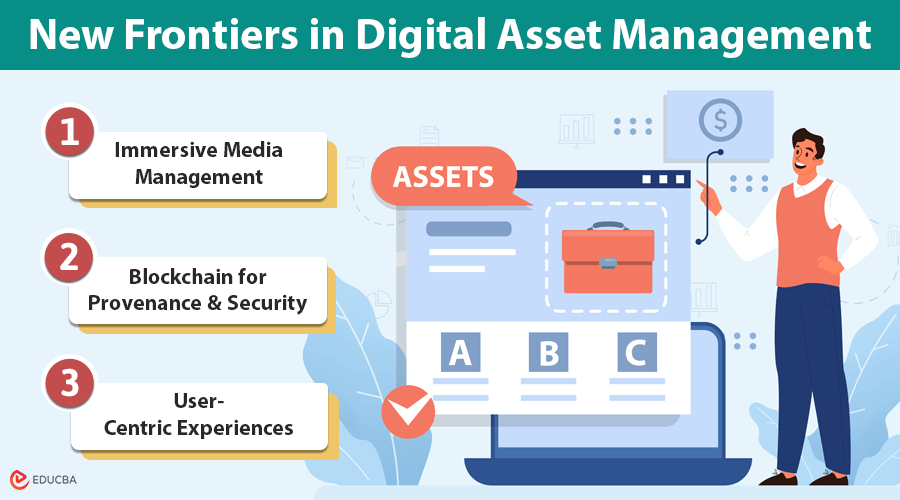
AI in Digital Asset Management: Overview
Digital assets—from images, videos, and 3D renderings to immersive VR content—are more than just files; they are the backbone of modern business. As we approach 2025, Digital Asset Management (DAM) is becoming much more intelligent with the help of AI. The future of DAM goes beyond just storage. It is about intelligence, automation, and creating a seamless user experience.
The Evolution of Digital Asset Management
Early DAM systems primarily focused on organizing files and helping teams quickly find the right assets. However, these early solutions were often clunky, with cumbersome folder hierarchies and slow search functions. DAM platforms began to improve as time passed, offering features like metadata tagging, version control, and integrations with content management systems (CMS) and marketing tools.
Today, organizations have higher expectations. They want DAM platforms that do more than store and retrieve files. They want intelligent, intuitive, integrated systems into their broader digital ecosystem. That is where AI in digital asset management comes into play.
The Rise of AI in Digital Asset Management (2025)
1. AI-Powered Metadata and Tagging
One of the most exciting advancements in DAM is the integration of AI in digital asset management. With AI, platforms can automatically tag images, videos, and audio files with relevant keywords. This means no more manual tagging or searching through files to add metadata. AI can recognize objects, people, colors, and even emotions at scale, making it easier to find the right assets.
AI in digital asset management will likely go beyond object recognition, capturing more nuanced details like mood or context, further improving the search experience.
2. Intelligent Search and Asset Recommendations
With AI understanding the content of digital assets, the possibilities expand. Today, some DAM systems suggest relevant assets based on specific campaign needs, brand guidelines, or historical data. As we move into 2025, we expect DAM platforms to become more like strategic partners. Instead of merely returning search results, they will proactively recommend design templates, associated images, or potential collaborators. This level of intelligence will save teams countless hours.
3. Tighter Integrations and Seamless Workflows
Gone are the days of siloed DAM systems. Businesses now demand integration with project management software, CRM platforms, social media schedulers, and more. By 2025, AI in digital asset management will ensure digital assets flow seamlessly between different platforms. With robust APIs and pre-built connectors, DAM will become the central hub, ensuring brand consistency and content quality across every channel.
New Frontiers in Digital Asset Management
1. Immersive Media Management
As Virtual Reality (VR), Augmented Reality (AR), and Mixed Reality (MR) become more popular, organizations will need better tools to manage these complex assets. Traditional folder structures and 2D previews will not suffice. The future of DAM will include 3D previews, interactive demos, and specialized metadata to handle immersive media. This will open new creative marketing, training, and product development possibilities.
2. Blockchain for Provenance and Security
The digital world is increasingly concerned with asset authenticity and ownership. Blockchain technology can create a secure, unchangeable record of every transaction or change made to a digital asset. By 2025 and beyond, blockchain integration in DAM systems will help businesses track the origin and changes of their assets, ensuring trust and security.
3. User-Centric Experiences
While back-end capabilities like storage, scalability, and security remain essential, the focus is shifting to the user experience (UX). Future DAM systems will feature intuitive interfaces, personalized dashboards, and user-first design elements. These systems will be user-friendly, and help teams in remote or hybrid work environments collaborate and stay productive, no matter where they are.
The Human Touch in an AI-Driven World
Despite the rapid advancements in AI, there is a crucial human element to consider: technology should empower people, not replace them. The most successful DAM systems will balance automation and human creativity. While AI will handle repetitive tasks like metadata tagging, users will focus on strategic, creative tasks that require human insight. This will allow businesses to remain agile, competitive, and innovative in an increasingly digital world.
The Future of Digital Asset Management
Looking ahead, AI in digital asset management will transform DAM systems from simple repositories of assets to intelligent command centers. These systems will understand the context of your content, predict future needs, and offer real-time insights that enhance business decision-making. With AI driving innovation, the future of DAM is brighter and smarter than ever.
As we move beyond 2025, the role of AI in Digital Asset Management will continue to evolve, making DAM platforms more integrated, efficient, and intelligent. This will open new business opportunities and improve the management of digital assets across industries.
Recommended Articles
We hope this article on AI in digital asset management was helpful. Explore these recommended articles to learn more about the latest advancements in AI-driven DAM solutions and best practices for optimizing your digital asset workflows.


